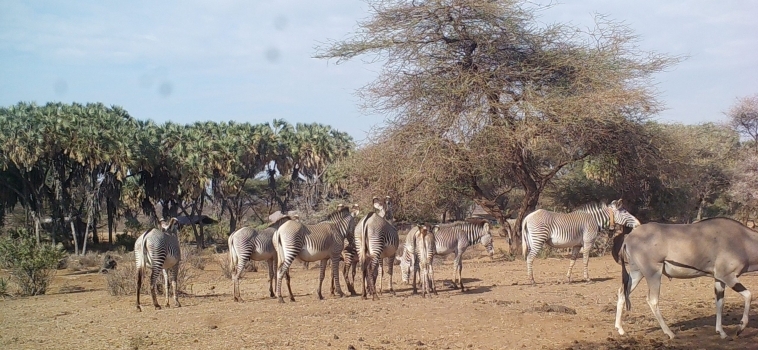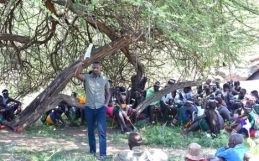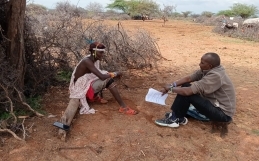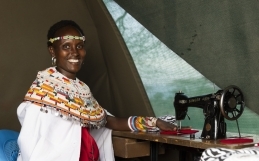As 2017 moves into the last quarter, the Grevy’s Zebra Trust team is working tirelessly to save as many Grevy’s zebra as possible. The situation is dire. The effects of the prolonged drought, coupled with severe overgrazing of remaining forage by domestic livestock, have taken their toll on the endangered Grevy’s zebra population. 98 Grevy’s zebra have died thus far in 2017, of which more than 60% are attributed to drought-related deaths. Distressingly, this represents 4% of Kenya’s total population.
With backing from the Grevy’s Zebra Technical Committee (GZTC), GZT started a feeding program across all areas of Grevy’s zebra range where it was shown that the animals were losing condition, following the GZTC’s supplementary feeding guidelines. Early feeding helps to prevent starvation and to maintain body condition so that Grevy’s zebra can withstand the effects of drought and disease.
GZT established sixteen feeding sites in the El Barta, Laisamis and Wamba regions, which were operational from January through May 2017. Following sporadic rainfall in May 2017, feeding of Grevy’s zebra further north in El Barta and Laisamis was stopped as forage marginally improved in these areas, and more importantly, the distance between forage and water sources decreased, as surface water was replenished. However, in Samburu East, no rainfall was received and increasing livestock pressure was put on the National Reserves of Samburu, Buffalo Springs and Shaba, where Grevy’s zebra are currently concentrated.

Elephants utilise the hay in Buffalo Springs National Reserve (c) Grevy’s Zebra Trust
GZT therefore started feeding the Grevy’s zebra in Buffalo Springs and Samburu National Reserves in July 2017. Thanks to support and cooperation from the reserve teams and our tourism and conservation partners, this has been very successful. However, Grevy’s zebra mothers with foals, who have higher energy requirements due to the lactation burden, were rapidly losing condition, putting their young foals at risk of starvation. In addition, we observed that many of the Grevy’s zebra had diarrhoea due to poor nutrition and high parasite loads.
We have therefore increased the amount of hay and the frequency of feeding to ensure that we reach as many Grevy’s zebra as possible and maintain their condition. GZT has a dedicated vehicle and team putting out hay daily and monitoring the condition of animals. Not only are we reaching over 200 Grevy’s zebra, but we are also feeding many other species, including oryx, elephant, Grant’s gazelle and water buck.
It is thanks to our incredible teams on the ground who are our eyes and ears for the wildlife, that we were able to respond quickly and target vulnerable populations. These dedicated Scouts, Warriors and Ambassadors know where the Grevy’s zebra are, what their condition is, how they are responding to the feeding, and where there are problems. As we move into 2018, we plan to invest significantly in rangeland restoration. At the same time, it is absolutely critical for the survival of the Grevy’s zebra that we maintain the operations of our field teams on the ground. This will ensure that we can implement the most effective management strategies to help restore their populations, and offer the zebra the best possible care, especially during times of environmental stress.






